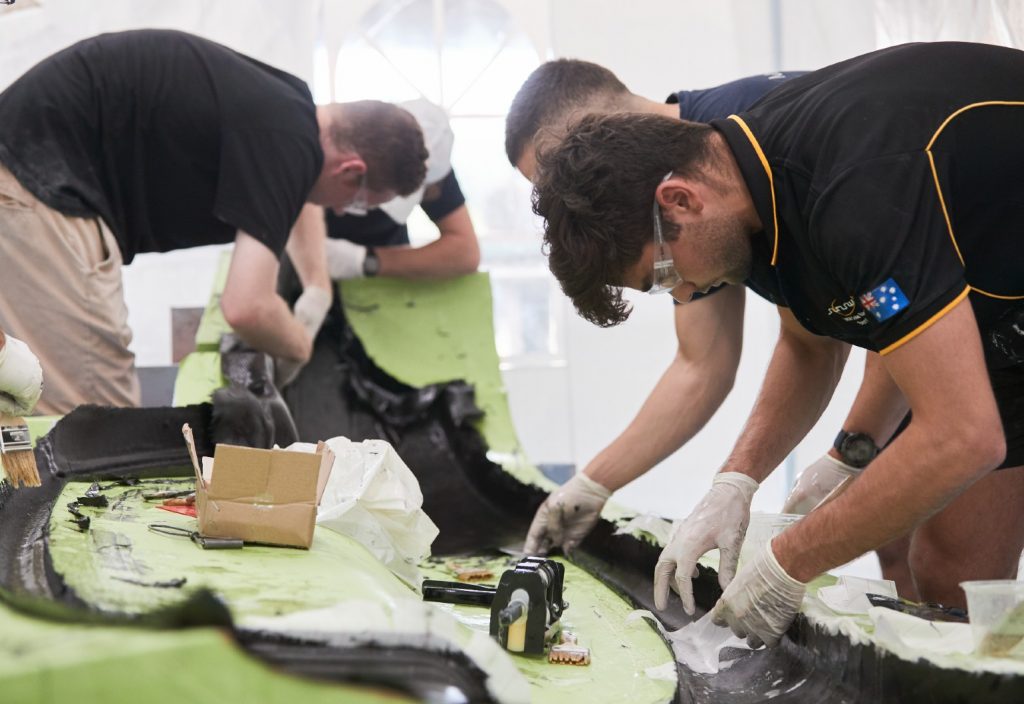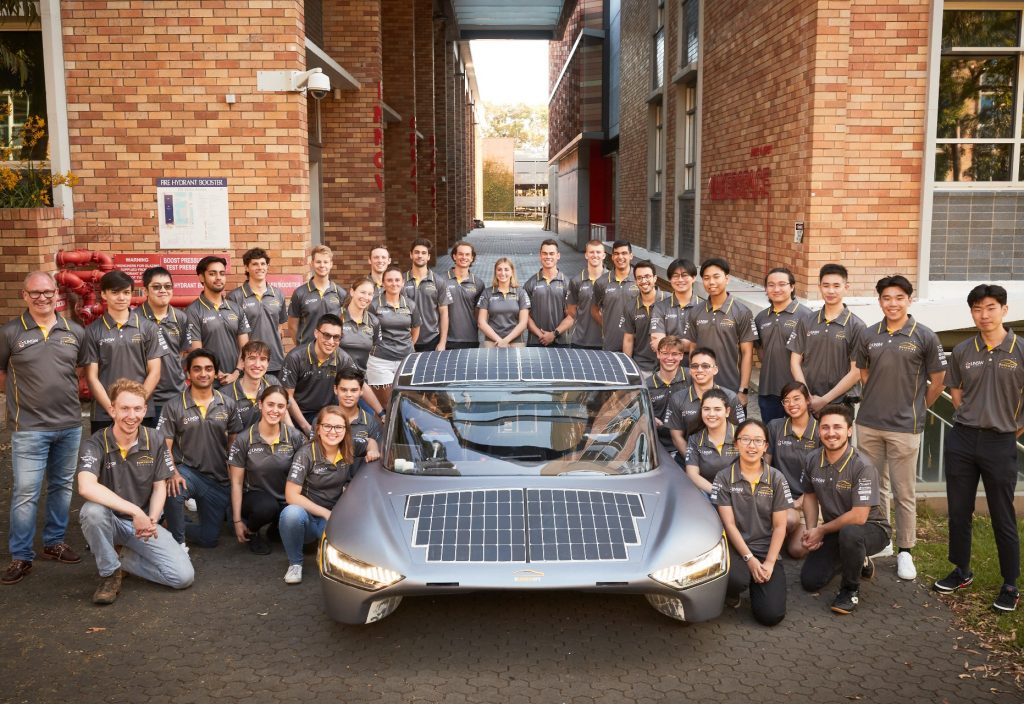A crack team of student engineers from the University of New South Wales (UNSW), led by a former Formula One racing guru, is almost ready to unveil its latest solar-powered car.
Sunswift Racing is fast approaching completion of the sleek Sunswift 7, but planning is already underway for the eighth-generation vehicle.
The Sunswift team, which has been engineering solar-powered vehicles for 26 years, is now eyeing off a Guinness World Record for the fastest solar-powered vehicle, a record that currently stands at 91.332 km per hour.
A well-oiled machine
According to Sunswift Racing Principal and Professor of Practice at UNSW Richard Hopkins, Sunswift was originally formed to enter the 1996 World Solar Challenge, the 3000 km-long solar vehicle race from Darwin to Adelaide.
The idea originated in rather unconventional circumstances, or so the story goes.
“Back in 1996, a couple of PhD students and academics were down at the pub, got drunk and said, ‘let’s build a car to enter into the World Solar Challenge’,” Hopkins said. “That’s how it started.
“I like the story whether it’s true or not… I’m embellishing a little bit, maybe.”
Hopkins, who is the former Head of Operations for Red Bull’s Formula One racing team, said Sunswift has since transitioned into a UNSW Vertically Integrated Project (VIP), which are project-based learning courses for undergraduates at UNSW, with senior leadership guiding the way.
“Over the last two years we’ve manoeuvred the team into a much higher profile position, much more brand-aware, all the while creating a better experience for students,” he said.
A glimpse at the Sunswift team lineup shows this to be nothing less than a major operation — 65 students collaborate across multiple departments, from design to software to renewable energy.
Andrea Holden, a Bachelor of Mechanical Engineering student and Sunswift team manager, is one such student, although she didn’t always have her eyes set on joining the team.
Holden, who originally began a degree in chemical and biomedical engineering before switching to mechanical engineering, said the trajectory of her studies was forever changed by Sunswift.
“I joined [the Sunswift team] in May 2020, and I’ve never looked back,” she said. “I’ve gotten so many amazing opportunities out of it.
“My marks have gone up significantly since I changed degrees. That’s a bonus.”
Building better
One of the challenges faced by the current student team was that many of them were onboarded during the pandemic. They also face an obvious problem, with students graduating every year and moving on from Sunswift, although retention is still high.
“Joining Sunswift Racing is a new and unique experience for every student who joins the team,” Holden said. “We take a lot of lessons from that.”
Despite the rocky start, Holden and Hopkins agreed that Sunswift 7 is the cream of the Sunswift crop. Not because it is leaps and bounds above its predecessor, but owing to subtle yet significant developments in its engineering.
“The car is superbly engineered,” Hopkins said. “There have been step advancements across every area. The old car’s battery was 46 kWh; the latest battery is 38 kWh. We’re probably going to achieve more in terms of range, better aerodynamics, better rolling resistance.
“The car’s significantly lighter. It is definitely significantly safer [and] structurally so much better. The whole package is an improvement.”
With a top speed of 140 km/hour, the Sunswift 7 might not match conventionally powered vehicles for pace, but the metric for success is a little different when it comes to solar car racing.
“The latest car is a better engineered car,” Holden said. “It has a lot more thought and structure around why we made decisions. It’s significantly better documented.”

From hybrid to ‘trybrid’
Sunswift’s sixth-generation vehicle, nicknamed Violet, broke a Guinness World Record by travelling 4100 km from Perth to Sydney on just 3.25 kWh/100 km, as reported by create.
The team intends to further that success with a Guinness World Record attempt from behind the wheel of Sunswift 7 — but their ambition does not stop there.
“Sunswift 8 is actually already in the works, which is bizarre to think but very exciting,” Holden said.
“COVID-19 made us look at ourselves and the potential impact the team can make. We will still compete in the Bridgestone World Solar Challenge, but we have realised that there are so many more opportunities out there.”
Future plans for the team include looking into building its own solar cells, and bringing more production of materials in-house rather than buying them off the shelf.
“When we started in 2020, we had a team of 27,” Holden said. “We’re now at 65. Having a team that’s scalable, [so] we can still have our eye on every aspect of the car and the vision that we’re trying to achieve, is really important.”
“Technology is moving at such a fast rate now,” Hopkins added. “We need to be part of that innovation. Sunswift Racing used to build a car every four years; we now build a car every two years as a result.”
What does that innovation look like exactly? For Sunswift Racing it could mean developing technologies such as regenerative braking.
“Sunswift 8 will exploit all the technologies that are out there,” Hopkins said. “Maybe not hybrid technology, but maybe ‘trybrid’ technology, where we have a combination of solar, electric and hydrogen.
“By regulation, our car doesn’t even have windscreen wipers. It doesn’t have air conditioning. It doesn’t have ABS and it doesn’t have airbags — but maybe the next one will.”
